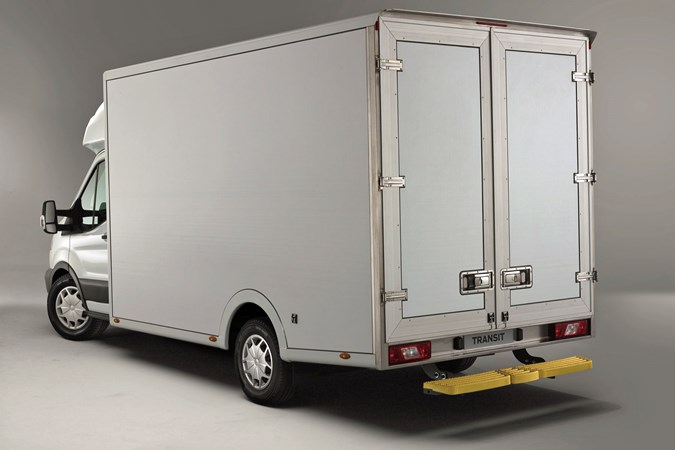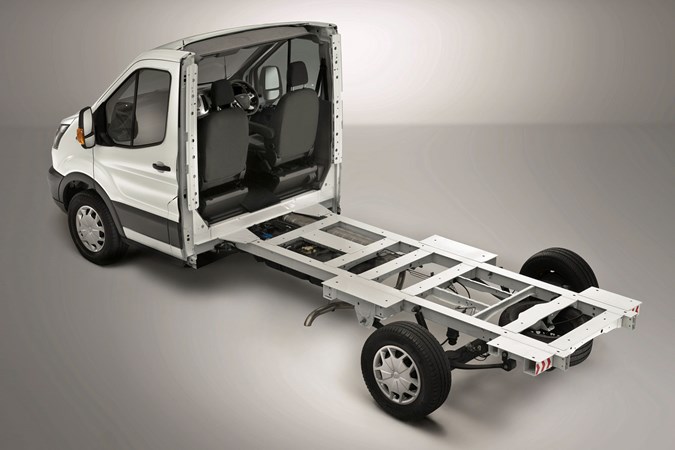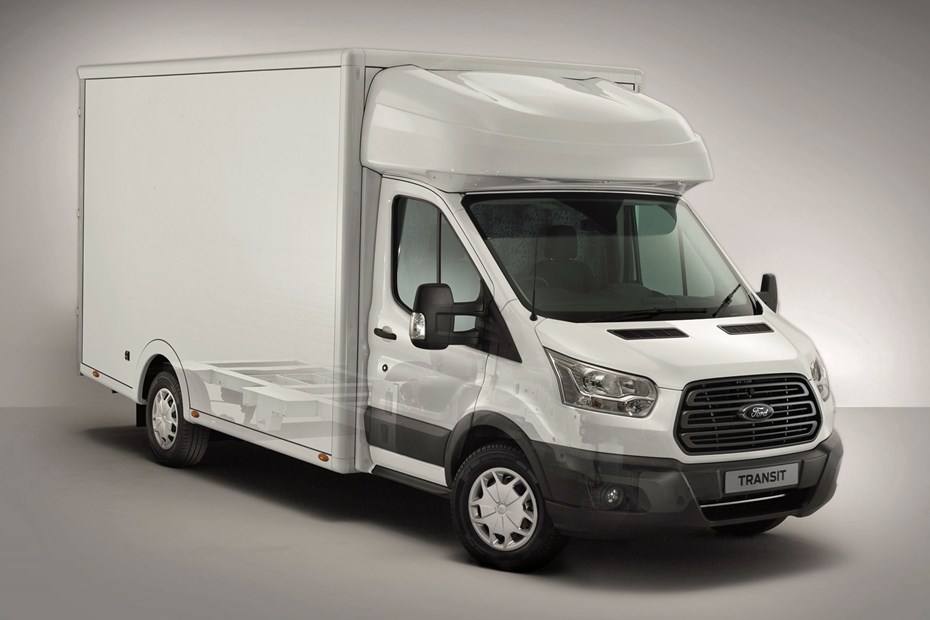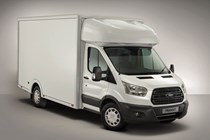Ford has announced a skeletal chassis cab variant of the full-size Transit. As the skeletal name suggests, this new front-wheel drive model places an emphasis on low build-weight to maximise payload and improve efficiency.
The new Ford Transit skeletal chassis cab also offers an extra-low chassis height, making it suitable for a wide range of conversions where a low floor loading height is an advantage.
For full details including confirmed pricing, keep reading.
Ford Transit skeletal chassis cab technical details
As a chassis cab, this new model only has bodywork up to just beyond the doors – with a simple structure behind this ready to support bespoke conversions.
There are two major points of difference between this skeletal version and the standard front-wheel drive (FWD) Ford Transit chassis cab:
- 100mm lower chassis height compared with the conventional chassis cab
- 200kg lower weight compared with the conventional chassis cab
The reduced chassis height means a lower step-in height – and although the exact figures will be dictated by the rear body conversion, this should allow operators to avoid adding a tail lift, saving additional expense and weight.

Speaking of weight, the 200kg saving the skeletal chassis cab delivers directly transfers into increased payload capacity. Good news for Transit fans, as the regular van struggles for this slightly versus the best large van competition.
It should also deliver improved fuel economy, spec-for-spec, as well.
The Transit skeletal chassis cab is available in three wheelbase lengths (labelled L2, L3 and L4), and has the option of a wide-track rear axle on the shorter pair.
Maximum gross vehicle weight (GVW) is 3.5 tonnes – the most you can drive on a regular car licence.
Engine choice is limited to the 130hp and 170hp variants of Ford’s 2.0-litre Ecoblue commercial vehicle diesel engine – so no entry-level 105hp model – both fitted with a six-speed manual gearbox as standard.
A six-speed automatic transmission is optional.
Anything else of note about the Ford Transit skeletal chassis cab?
As the rear view below illustrates, the skeletal chassis cab comes open-backed from the factory.

This helps with that headline 200kg weight saving, of course. But also allows walk-though body conversions that enable the driver and passenger to access the load area without leaving the vehicle.
This is likely to be particularly useful for parcel delivery conversions, though Ford is also targeting grocery delivery services.
Key rival for the new model is surely the Renault Master LoLoader, arguably the most user-friendly large van box-body conversion presently available.
What price is the Ford Transit skeletal chassis cab and when does it go on sale?
Pricing starts from £27,765 (basic excluding VAT) for the shortest L2 130hp manual gearbox variant, rising to £31,765 for the longest L4 170hp automatic version.
Just remember that this price is for the skeletal chassis only, and doesn’t include the cost of the rear bodywork.
The Ford Transit skeletal chassis cab is available to order now from any of Ford’s 115 UK Transit Centres.
Also read:
>> Ford Transit (2014-on) full range review











